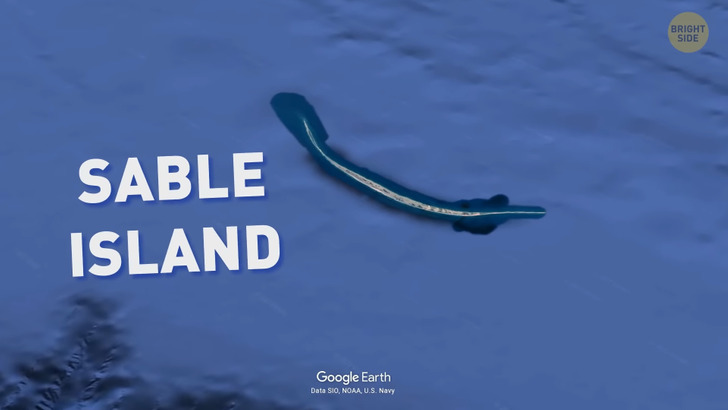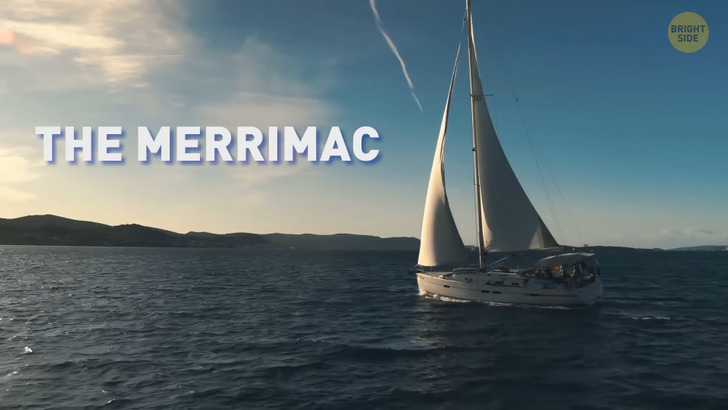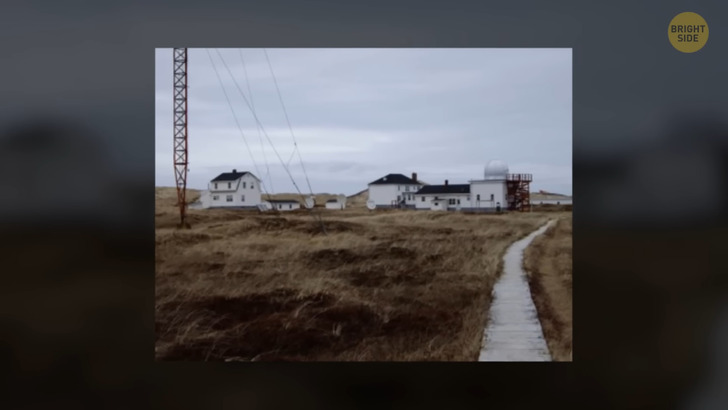12 People Whose Hobbies Defy All Expectations

It has recently become a popular location for many tourists looking for the perfect place to get away from it all. If you’re lucky enough to catch a sunny day here, it’s like no other, I can assure you. Chances are, you’ll end up having loads of foggy days, but — let’s be honest — they have a special allure of their own. This enchanting, smile-shaped island is called Sable Island.

It’s located 190 miles from mainland Nova Scotia. It wasn’t accessible to the general public until 2013. That’s when it was added to the list of National Parks of Canada. You can get here either by plane or by water. But what is so enchanting about this place anyway? There must be something since the yearly tourist count is growing every year.
Firstly, there’s a spectacular number of wild horses here. There are between 200 and 500 horses roaming free all over the island. There’s also a large population of gray seals. The place is also the only breeding location of a rare bird species called the Ipswich sparrow. If you’re already considering a trip here, there are some things you need to know first. Remember that fog I mentioned earlier? Well, it turns out Sable Island is the foggiest place in the Canadian Maritimes. I speak about approximately 127 foggy days each year! During such days, Sable Island literally disappears underneath a thick layer of fog.
You won’t be able to explore the place on your own either. The local regulations state that visitors need to travel within a group. And they also need to keep a 197 ft distance from the wildlife they can encounter here. As charming as this place may be, it holds a dark secret hidden beneath the sandy dunes. And it has nothing to do with the beautiful creatures living here or the island’s unique vegetation.
Apart from being known for its horses and seals, Sable Island is infamous for an overwhelming number of shipwrecks. Over the years, about 350 ships have ended their lives here — on these sandbars. When survivors described their experiences, they usually mentioned harsh weather conditions near this mysterious island.

The Island also made its way into literature when it was described in a book called “The Perfect Storm,” which was written by Sebastian Junger and published in 1997. The book was so successful that it was later adapted for the big screen in 2000, with George Clooney playing the leading role!
The first recorded shipwreck near Sable Island dates back to 1583. The boat was named the HMS Delight and was under the command of British adventurer and explorer Sir Humphrey Gilbert. Only 17 people managed to survive the catastrophe by escaping in a small boat. Records mention that they spent seven days at sea before reaching the shores of Newfoundland.
In 1884, another vessel named The Nicosia struggled in the thick fog as well. The ship was completely destroyed, but, fortunately, all 18 crew members managed to survive. The captain’s son was almost lost at sea when a lifeboat capsized when he was climbing into it. He somehow managed to stay underneath the lifeboat, which was completely submerged! When this lifeboat was righted, he eventually emerged from the water and was rescued for the second time.
The years between 1947 and 1999 were relatively quiet on the island. In 1999, though, a yacht called The Merrimac ran aground near the shore of the island at about 2:00 AM on July 27. The 40-foot fiberglass boat had a crew of only 3 people. Natural gas exploration workers, who were, luckily, not far away, rescued them. The crew managed to fly safely to Halifax the next day.

The owner of the Merrimac tried to recover his boat by hiring a local fisherman. Unfortunately, this operation was unsuccessful since only the fittings of the yacht were eventually saved. It took no more than six weeks for the sand and waves to crush and completely break up the hull of the Merrimac. So, what is it about this place that’s so dangerous for boats? Does it have anything to do with the weather? Or maybe there are other forces at play?
The explanation turns out to be a bit more complex. And it wasn’t easy to figure out, at least not way back in the 1500s. First of all, the island is located close to one of the world’s richest fishing grounds. Since it’s also near one of the major shipping routes between Europe and North America, hundreds of vessels sail past it each year. The likelihood of shipwreck increases when there are so many boats roaming around the area.
Sable Island is also in the way of most of the storms that move up the Atlantic coast of North America. It’s no surprise that boats often get hurtled straight onto the shores of this island. The weather has a lot to do with it too. During the summer season, the warm air from the Gulf Stream creates a dense fog as it merges with the air cooled by the Labrador Current that passes by the island. Other currents don’t help the matter. Sable Island is next to the meeting point of three major ocean currents: the Gulf Stream, the Labrador Current, and the Belle Isle Current.
Since the 1950s, radars and other modern navigation tools have been used on commercial vessels as well. Up until then, the sextant was the main instrument used to figure out a ship’s location. It doesn’t mean that sextants weren’t accurate. But this instrument couldn’t work properly without a clear view of the Sun or stars. Which means it didn’t help much in dense fog — such as the one surrounding Sable Island — or when it was cloudy.

Often during bad weather, the captain of a ship navigated relying on their experience and intuition and based on the ship’s speed and direction. That’s why most of the survivors in shipwrecks near Sable Island said that the captain had simply miscalculated the ship’s position, crashing into Sable Island by accident. This dusty, sandy land is as unfriendly to ships as it is to... trees. There’s reportedly a single tree on the whole island, and it looks more like a bush.
It’s actually a pine tree. And since the famous island horses don’t see it as much of a food source, it somehow managed to survive. Reports say that the tree was planted back in the 1950s. Local authorities were trying to grow a forest on the island to make it a bit more welcoming. They have planted tens of thousands of trees over the years: more than 69,000 evergreens, 600 fruit trees, and about 55 pounds of pine seeds, along with other plants which could survive the conditions on the island.
But they were no match for the extreme weather and sandy soil. Out of all those plants, just one pine tree is still alive. Thanks to its resistance, it has even become a symbol of Sable Island. Interestingly, for around 40 years, the island also had just one inhabitant. Can you imagine that: one person living on a remote island for so many decades? It’s the story of a woman called Zoe Lucas. She chose to surround herself with the only other residents on the island: the horses, the gray seals, and the many species of birds.
An esteemed naturalist, she mentioned in an interview she gave back in 2017 that she was used to living on the island and that she never got lonely. To survive here, she had to put together an essentials kit. It included a notebook to take notes and a pair of binoculars to study the wildlife. You can safely assume she wasn’t scared of the intimidating surroundings since she decided to eventually call this place home.

At first, Zoe wanted to set up camp on one end of the island, near some abandoned buildings. But eventually, she settled in a wooden house near a bunch of sand dunes. A Canadian institution called the Meteorological Service of Canada put together the simple construction back in the 1940s. “Parks Canada” operates the building these days.
Zoe’s work included gathering as much data on the local horse population as possible. It could help scientists better understand how they managed to adapt to the unfriendly environment. She also helped gather the debris that made it to the shore to help track pollution levels. Among all the rubbish that she collected, there was a refrigerator and a crateful of fresh peppers.
Some other specialists eventually started working rotating shifts on Sable Island to offer the brave woman a little bit of company now and then.











